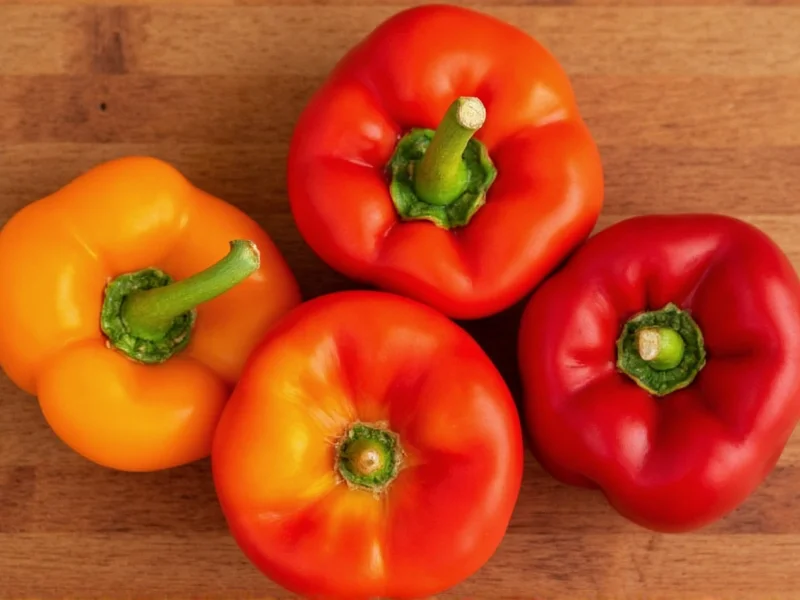When exploring how hot are hatch peppers, it's essential to understand these New Mexico natives aren't a single variety but a collection of chiles grown in the Hatch Valley region. Their heat level fluctuates dramatically based on growing conditions, ripeness, and specific cultivar. Unlike standardized commercial peppers, Hatch chiles offer a spectrum of heat experiences that delight both mild spice enthusiasts and heat seekers.
Understanding Hatch Pepper Heat Variability
The Scoville scale measures capsaicin concentration—the compound responsible for chili heat. Hatch peppers' wide range (1,000-8,000 SHU) stems from several factors:
- Growing conditions: Soil composition, water stress, and sunlight exposure significantly impact heat development
- Ripeness stage: Green (unripe) Hatch peppers tend to be milder, while red (fully ripe) varieties develop more capsaicin
- Specific cultivar: Farmers grow multiple varieties under the "Hatch" umbrella, each with distinct heat profiles
- Individual plant variation: Even within the same field, heat levels can differ between plants
| Pepper Type | Scoville Heat Units | Heat Comparison |
|---|---|---|
| Hatch Mild | 1,000-2,500 | Slightly hotter than poblanos |
| Hatch Medium | 3,000-5,000 | Comparable to average jalapeños |
| Hatch Hot | 6,000-8,000 | Near lower serrano range |
| Jalapeño | 2,500-8,000 | Benchmark for medium heat |
| Serrano | 10,000-23,000 | Significantly hotter than Hatch |
Practical Implications of Hatch Pepper Heat Levels
Knowing how hot are hatch green chiles versus red varieties helps home cooks make informed choices. The mild version works well for family-friendly dishes like stuffed peppers or chile con queso, while the hot variety adds serious kick to salsas and carne adovada. Many grocery stores now label Hatch peppers by heat level, but when in doubt, examine the physical characteristics:
- Mild varieties typically have smoother, straighter pods with fewer bumps
- Hotter specimens often show more irregular shapes, pronounced shoulders, and visible striations
- Stem texture can indicate heat—rougher, woodier stems often signal hotter peppers
When handling hatch chile heat scale varieties, always wear gloves when cutting hot versions and avoid touching your face. The capsaicin concentration in hotter Hatch peppers can cause significant skin irritation. Roasting Hatch peppers not only enhances their flavor but can slightly reduce perceived heat by breaking down some capsaicin compounds.
Seasonality and Authenticity Considerations
True Hatch Valley peppers are only available August through September, making this the optimal time to experience their authentic flavor and heat profile. Many products labeled “Hatch” outside this window or from other regions don't capture the genuine characteristics that define how hot are hatch peppers when properly cultivated. The New Mexico Chile Association's official seal guarantees authentic Hatch Valley origin.
Chefs seeking consistent heat levels should consider purchasing from specialty growers who categorize their harvests by specific heat measurements rather than generic “mild,” “medium,” or “hot” labels. Some progressive farms now provide actual Scoville testing results for their crops, addressing the common question are hatch chiles hotter than jalapenos with precise data.
Culinary Applications Based on Heat Level
Understanding the hatch pepper heat range allows for better recipe planning:
- Mild (1,000-2,500 SHU): Ideal for cream sauces, scrambled eggs, and dishes where children will eat. These provide flavor without significant heat.
- Medium (3,000-5,000 SHU): Perfect for traditional New Mexican dishes like stacked enchiladas and green chile stew. Offers noticeable heat that builds gradually.
- Hot (6,000-8,000 SHU): Best for adventurous cooks making hot sauces, spicy salsas, or dishes requiring serious heat. Use sparingly at first and adjust to taste.
When substituting Hatch peppers in recipes, remember that their heat profile differs from jalapeños—Hatch varieties deliver a more complex, earthy heat with less sharpness. The question how hot are hatch peppers compared to jalapenos doesn't have a simple answer since both have overlapping ranges, but Hatch peppers generally offer a more nuanced heat experience.
Measuring Heat in Your Own Kitchen
Without laboratory equipment, you can estimate hatch green chile heat level through these practical methods:
- Visual inspection: Look for thin walls and pronounced shoulders, which often indicate higher heat
- Smell test: Hotter peppers emit a sharper, more pungent aroma when cut
- Taste sampling: Start with a tiny piece of the placenta (white ribs), which contains the most capsaicin
- Water displacement: Hotter peppers often feel denser and heavier for their size
Remember that heat perception varies between individuals—what seems mild to one person might feel hot to another. Always introduce Hatch peppers gradually when cooking for others, especially when exploring the hotter end of the hatch pepper heat scale.











 浙公网安备
33010002000092号
浙公网安备
33010002000092号 浙B2-20120091-4
浙B2-20120091-4